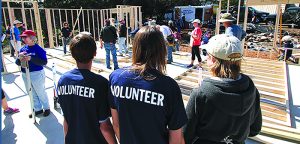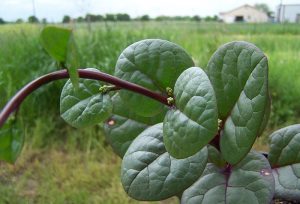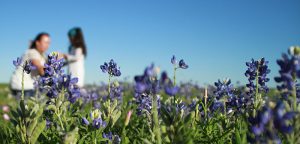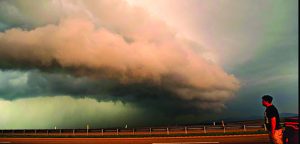By Christine Reid
Pollinators are in big trouble. While the act of pollination, conveying pollen to the stigma of a flower, is something even young children can understand, figuring out how to handle the challenges facing Nature’s workers isn’t so easy. Most of us have heard about sharp drops in honey bee populations in recent years and nature groups provide updates on how the Monarch butterflies are faring but other pollinators also need our attention. Recent reports have shown a disturbing decline in many varieties of butterflies, bees and other pollinators all over the world. National and state agencies as well as non-profit organizations are sounding the alarm over the problems that pollinators, especially native ones, are facing.
While honey bees are known for pollinating agricultural crops, native bees of many kinds actually do most of the pollinating in Texas. These bees include the fuzzy bumble bee, of course, as well as leaf cutter bees, mason bees, mining bees, squash bees and sunflower bees, to mention just a few. Other native pollinators are birds, bats, butterflies, moths, wasps, beetles, flies and more. While they certainly work the food crops along with the honey bees, native pollinators also visit plants which produce fruit and seed that entire ecosystems rely on. There are a lot of critters out there and, just like humans, they need food.
Most studies point to a few main reasons behind pollinator decline: habitat loss or fragmentation, diseases, pesticide use and invasive species. Commercial and residential development push out many native birds and insects or else make ‘islands’ of plantings that don’t provide the connected areas that wildlife need. Diseases brought in by invasive plant and animal species can be devastating to certain populations. In addition, pesticide and herbicide use in industrial agriculture as well as backyard gardens can be toxic to many birds and insects in both the short and long term. An extreme example of what can happen when native pollinators are absent involves specialty pear and apple orchards in southwest China. In recent years, farmers of these high-value crops, and their workers, had to painstakingly hand pollinate each blossom because the wild bee population was wiped out by excessive pesticide use and loss of natural habitat.
There are some encouraging signs. Reports in the early part of 2016 revealed that the Monarch butterfly population significantly increased from previous years, though the butterflies still need to be closely monitored. And, while most of us aren’t wildlife experts, there are steps that homeowners can take to help pollinators. In fact, several organizations devoted to nature and wildlife have campaigns on their websites that encourage and inspire everyone to make backyards as well as public gardens pollinator-friendly.
To both attract and keep pollinators hanging around your garden, you need to provide food, water and shelter, all in an environment that is chemical-free. That sounds basic enough but there are some critical details that can make your backyard a haven for birds, bees, butterflies and other pollinators.
When installing plants, use native or adapted flowers, trees and shrubs that will provide pollen and nectar. Put in not only a diversity of plants, in order to appeal to as many pollinators as possible, but also have groups of five or more plants (or let plants grow and form a wide swath) to make it easier for the pollinators to target. Along with having tree snags and rocks, leaving large clumps of native grasses in the garden can give butterflies and other insects protection from windy weather. Besides the usual spring bloomers, also choose plants that produce flowers and fruit in the other seasons as well. When possible, allow crops such as broccoli, basil, cilantro, etc., to form flowers and go to seed, which will attract pollinators.
Always provide a clean source of water in bird baths, shallow containers, fountains or ponds. Be sure to put small rocks in containers of water so that the bees and butterflies can sit and drink. Remember to keep the containers filled in the summer.
Another important way to help pollinators such as bees is to give them places to form nests. While some bees make nests in logs and other dead wood, most native bees form nests in the ground. To help them, keep some areas of ground bare and uncultivated in your garden. A few native bees, such as bumblebees, live in small colonies, but most wild bees are solitary and don’t defend their nesting site.
Finally, avoiding the use of pesticides in your garden is one of the single best things you can do for pollinators. After all, pesticides often end up killing more beneficial insects than the pests you were going after in the first place. A healthy, organically managed landscape with a diversity of wildlife will provide natural predators for the few ‘bad guys’ out there. So, unless you would really like to walk around your garden someday with a pot of pollen and a paintbrush, maybe now is the time to step up for the hardworking pollinators.
Any questions? Send an email to reidsnursery@gmail.com or call (512) 398-6011. Enjoy your garden!









